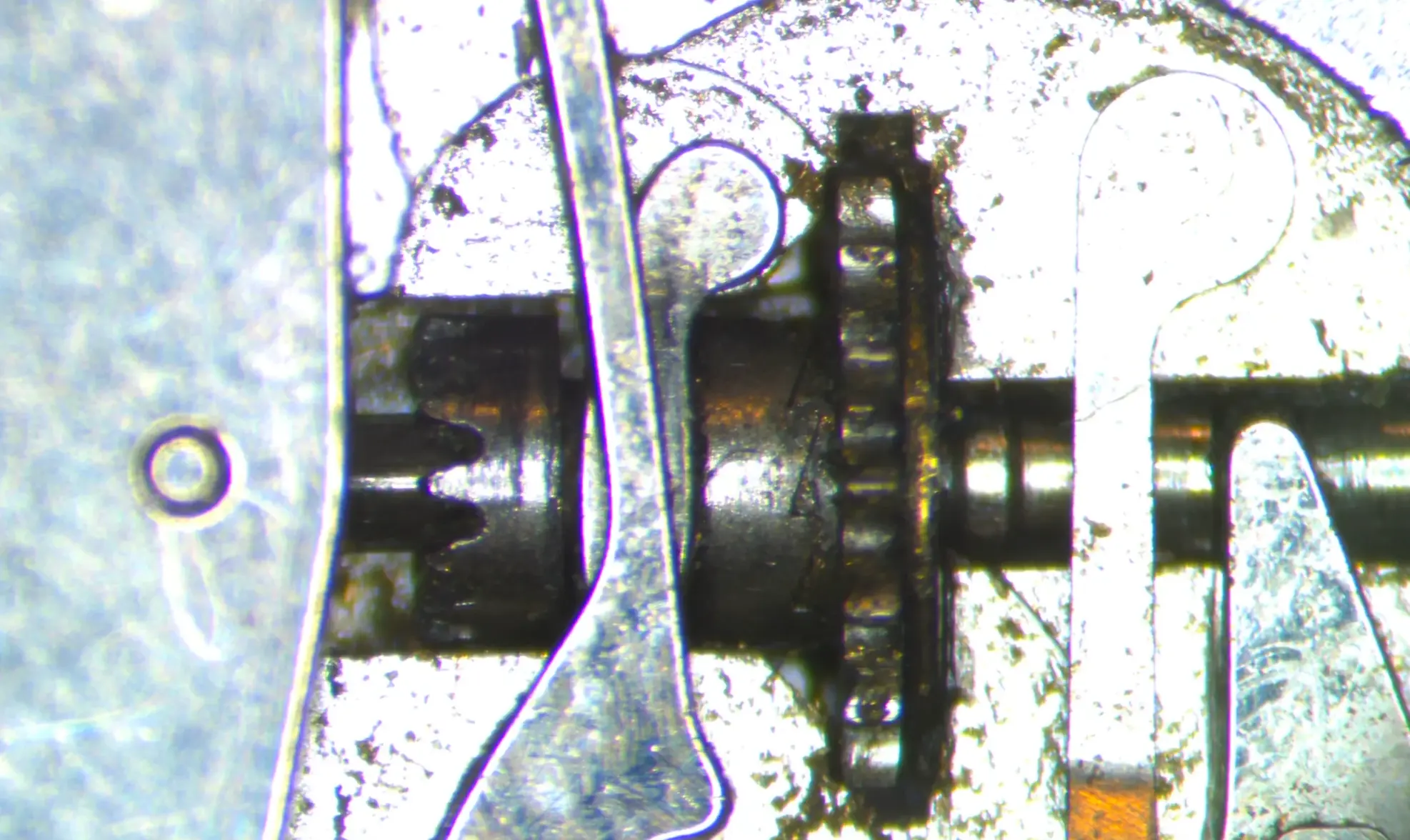azazello444
·Hello All,
Hope everyone is doing great.
I would like to share one experience and also get your valuable input/ideas on it.
I'm currently working on the maintenance/repair of a vintage Longines 6922 movement from 1973. When I disassembled the movement, I was, of course, expecting some surprises as this watch was purchased from eBay, and indeed, that's what happened. Please see the video I attached, the keyless works has an extra part, which I guess was made and installed by a previous watchmaker. The main question I have is why and what exactly was worn so he fixed the issue with that?
https://drive.google.com/file/d/1yCdGrXuNqE_DvONMZmTGswUuQAafN8uH/view?usp=sharing
I would like to repair this watch in the proper way (if possible) so if I need to replace any part, I'm fine to do that. But the question is, I'm struggling to figure out why exactly this part was added. I understand that the watchmaker needed to push the winding pinion towards the sliding pinion as it was slipping when winding the mainspring.
The watch was super dirty, and old lubrication was mixed with ground brass, which I guess was either due to this new part being ground (which is also brass) or the problem is still there, and the pinion is grinding the main plate(which also has signs of wear on the surface where winding pinion slides on the edge of the cut in the mainplate). So the movement is dirty and I'm now in the process of washing it and meanwhile wanted to hear your opinions what could be the main reason for such a solution.
Potential reasons I could think of are:
1. the winding stem is worn and it is not securing the winding pinion in the correct place so it moves a bit outside and grinds the mainplate. The winding pinion does not look particularly worn on the surface by which it slides around the stem.
2. the yoke spring is not pushing strong enough for the sliding pinion which then cannot secure the teeth with winding pinion and slips.
3. some parts in the keyless works (stem, winding pinion, sliding pinion) might not be original but replacements and this might have been done to compensate for the differences in sizes. This theory is less likely, but I cannot rule it out so far as I don't have the measurements of the original parts or the spare parts to compare.
I don't want to guess and buy all these spare parts to see which one fixes the issue, they are quite expensive, so your experience and ideas are very appreciated.
Thanks much in advance
Hope everyone is doing great.
I would like to share one experience and also get your valuable input/ideas on it.
I'm currently working on the maintenance/repair of a vintage Longines 6922 movement from 1973. When I disassembled the movement, I was, of course, expecting some surprises as this watch was purchased from eBay, and indeed, that's what happened. Please see the video I attached, the keyless works has an extra part, which I guess was made and installed by a previous watchmaker. The main question I have is why and what exactly was worn so he fixed the issue with that?
https://drive.google.com/file/d/1yCdGrXuNqE_DvONMZmTGswUuQAafN8uH/view?usp=sharing
I would like to repair this watch in the proper way (if possible) so if I need to replace any part, I'm fine to do that. But the question is, I'm struggling to figure out why exactly this part was added. I understand that the watchmaker needed to push the winding pinion towards the sliding pinion as it was slipping when winding the mainspring.
The watch was super dirty, and old lubrication was mixed with ground brass, which I guess was either due to this new part being ground (which is also brass) or the problem is still there, and the pinion is grinding the main plate(which also has signs of wear on the surface where winding pinion slides on the edge of the cut in the mainplate). So the movement is dirty and I'm now in the process of washing it and meanwhile wanted to hear your opinions what could be the main reason for such a solution.
Potential reasons I could think of are:
1. the winding stem is worn and it is not securing the winding pinion in the correct place so it moves a bit outside and grinds the mainplate. The winding pinion does not look particularly worn on the surface by which it slides around the stem.
2. the yoke spring is not pushing strong enough for the sliding pinion which then cannot secure the teeth with winding pinion and slips.
3. some parts in the keyless works (stem, winding pinion, sliding pinion) might not be original but replacements and this might have been done to compensate for the differences in sizes. This theory is less likely, but I cannot rule it out so far as I don't have the measurements of the original parts or the spare parts to compare.
I don't want to guess and buy all these spare parts to see which one fixes the issue, they are quite expensive, so your experience and ideas are very appreciated.
Thanks much in advance


